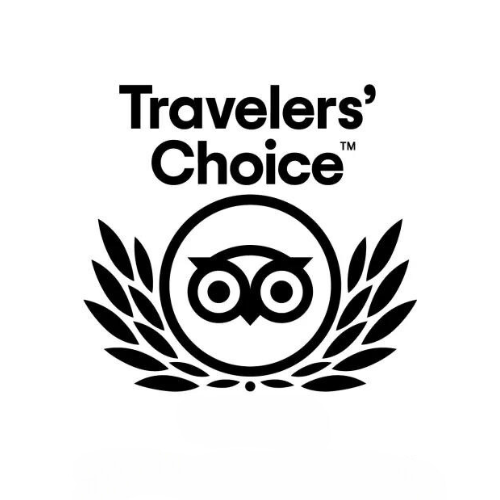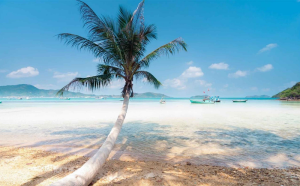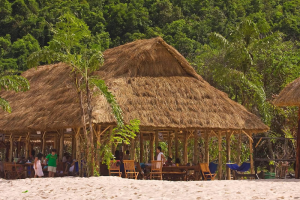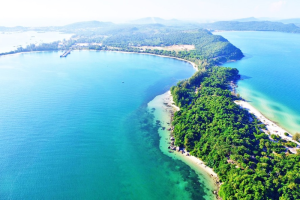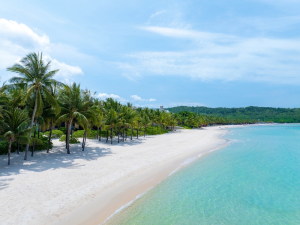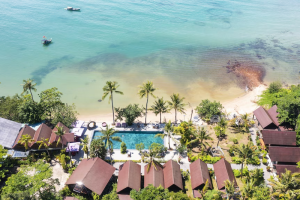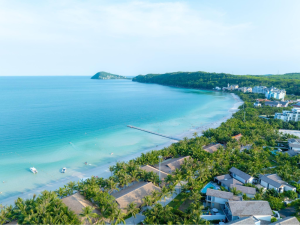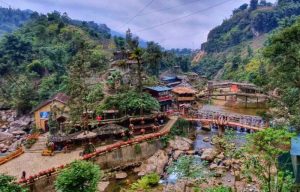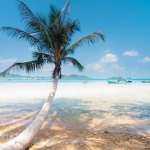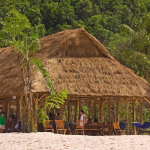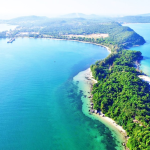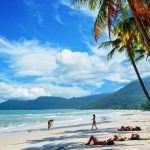Ban Gioc Waterfall has become a new favourite among travellers to northern Vietnam. Located in Cao Bang Province, the massive waterfall sprawls across the Quay Son River and also serves as the border with China, offering a memorable cross-border panorama. Ban Gioc waterfall in Vietnam, with its scenic cliffs and peaceful atmosphere, is an ideal retreat for those looking to avoid touristy destinations.
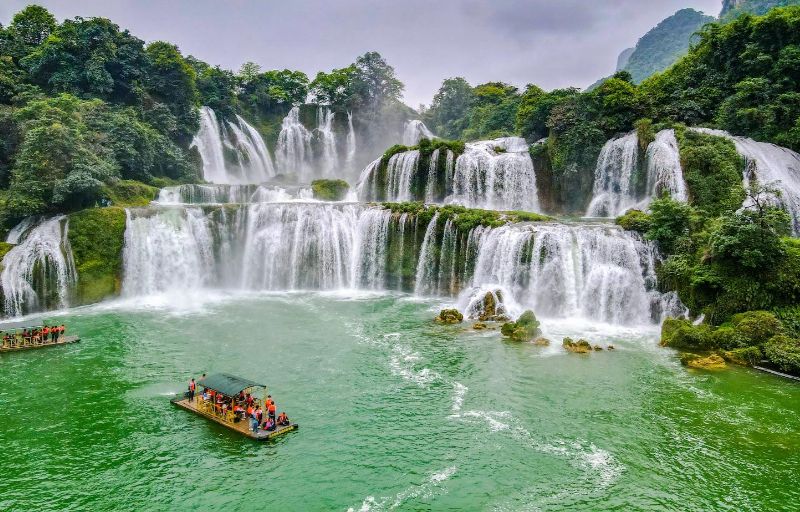
Where is Ban Gioc Waterfall and why is it famous?
The Ban Gioc Waterfall location is in the far northeast of Vietnam in the Trung Khanh District of Cao Bang Province. It is about 272 km north of Hanoi on the Quay Son River, which marks the border between Vietnam and China. The waterfall is in a site of natural interest to both countries and is also known outside of Vietnam as Detian Falls on the Chinese side. Both falls, nevertheless, are considered in Vietnamese geography to be part of the single Vietnam Ban Gioc Waterfall.
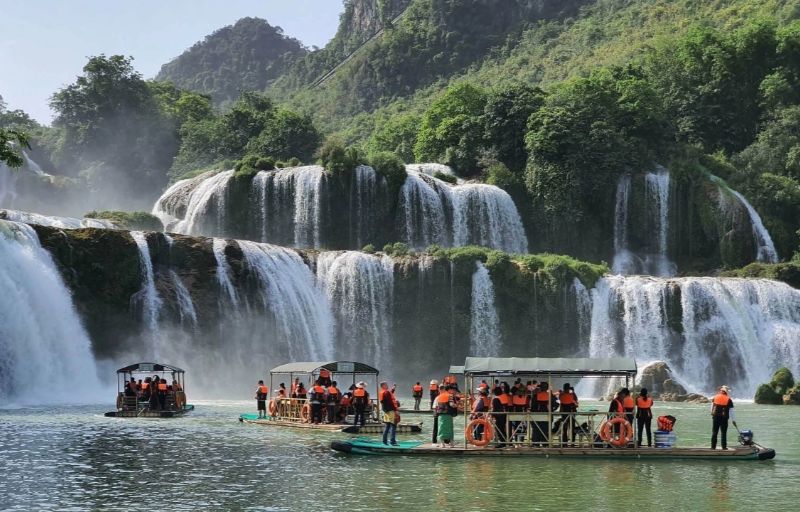
The falls drop about 30 m in height and are about 300 m wide, split into three tiers by natural rock and flora. During maximum flow after monsoonal rains, they combine as one magnificent cascade. It is also referred to as the world’s fourth‑largest international border waterfall after Iguazu, Victoria, and Niagara.
Ban Gioc is famous for its powerful current, lush karst scenery, and the unique cultural value of being in two countries. It’s also located in a geopark and has been preserved as a Vietnamese national scenic spot since 1997. People like its remote setting, the multi-tiered cascade scenery, and its relative lack of crowds on the Vietnamese side.
Best time to visit Ban Gioc Waterfall
A visit Ban Gioc Waterfall in Vietnam will be very memorable if you come during its best season. The best months are September and October, when the rain slows, the skies clear, and the surrounding rice fields are a bright gold after the harvest. The waterfall is still full of water, and the river water is turquoise and transparent.
The dry season, which runs from October to April, brings cool, comfortable weather and clear visibility. There is less humidity, making it more comfortable to hike and visit nearby attractions. Temperatures typically vary from 10 °C to 25 °C, and the peak tourist season is the December to February holidays.
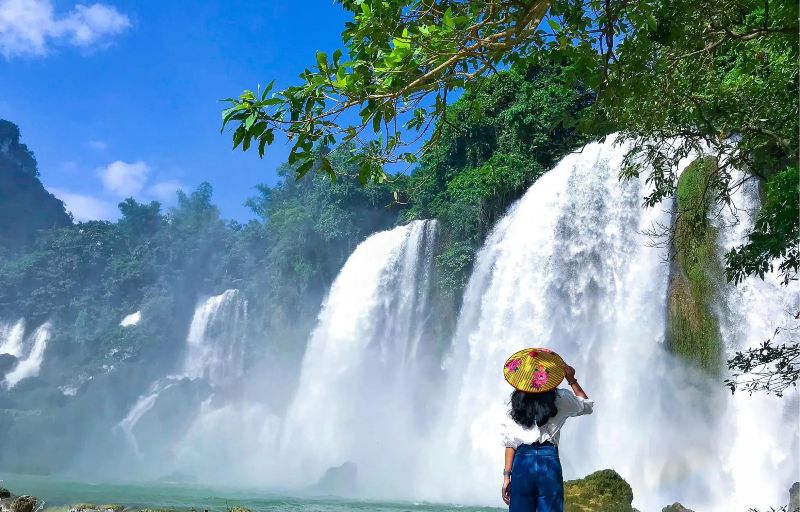
March to May presents another appealing period. This “flower season” provides blooming peach and plum blossoms, and pleasant temperatures to enhance the experience. Although some rain is to be expected, the scenery is lush and serene. Avoid the peak rainy months of May through September. Rain can lead to muddy water, hazardous travel, and poor visibility. Heavy rain can also affect road safety and photograph quality.
What to expect at Ban Gioc Waterfall
A visit to Vietnam Ban Gioc Waterfall promises not just a breathtaking view but also an unforgettable experience. The falls cascade over limestone cliffs, creating three layers of rushing water that merge into one mighty curtain during the rainy season. The sound of water crashing, the mist rising in the air, and the surrounding emerald rice paddies all make for a truly magical atmosphere.

Walking along scenic stone paths, you’ll pass through lush fields and enjoy panoramic viewpoints. One of the most exciting experiences is taking a bamboo raft ride (around 45,000 VND per person) that drifts right to the base of the falls, close enough to feel the cool spray on your skin. With fewer crowds on the Vietnamese side, you’ll find plenty of quiet moments for photography or simply soaking in the beauty.
To make the most of your trip, wear comfortable shoes with good grip, and bring a waterproof cover for your camera or phone. You can preview the Ban Gioc Waterfall photos for a better imagination before going to this beautiful location.
Read more: Mu Cang Chai best time to visit
Nearby attractions around Ban Gioc Waterfall
The area around Ban Gioc Waterfall Vietnam offers several worthwhile spots for exploration:
- Nguom Ngao Cave: Around 3–4 km from the falls, this limestone cave features vast chambers, stalactite and stalagmite formations, and cool interior temperatures of around 18–25 °C. Visitors can explore about 900 m of lit passages. The cave was once known as “Tiger Cave” in local legend.
- Phat Tich Truc Lam Ban Gioc Pagoda: Perched just 700 m from the waterfall, this Buddhist temple offers meditation areas and wide views of the falls and valley below. It is a calm spiritual stop with free entry.
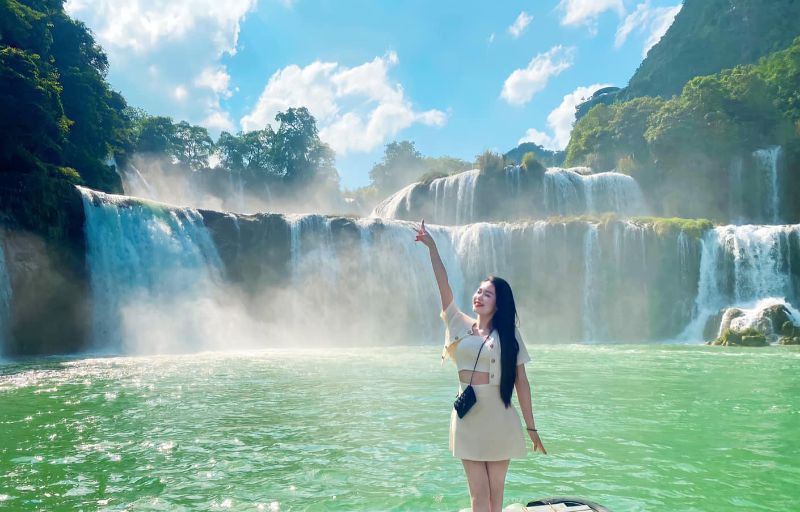
- Khuoi Ky Ancient Stone Village: About 2–3 km from the falls, this Tay‑ethnic village features traditional stone houses and quiet rural life. Homestay options here offer a rustic cultural experience.
- Phong Nam Valley: Approximately 10-30 km away, this lush valley is known for its golden rice fields and quiet rural beauty. It is especially scenic in late September and October.
- Thang Hen Lake: Located about 70 km from the waterfall, this mountain lake sits 1,000 m above sea level. Boating among granite peaks and flower fields is popular here. Some visitors choose to camp by the lakeshore.
Other interesting options include ancient revolutionary sites such as Pac Bo relics, scenic roads like that over Ma Phuc Pass, and hidden gems such as Nui Thung (Angel Eye Mountain), which offers panoramic views and forest trails
Tips for a smooth and safe visit to Ban Gioc Waterfall
To make the most of your journey, keep these travel tips in mind when visiting Ban Gioc Waterfall in Vietnam. These tips are selected from the most helpful Ban Gioc Waterfall reviews.
- Arrive early or mid-morning. The area is most peaceful before local groups and tours arrive.
- Wear sturdy, non-slip shoes. Paths can be wet or muddy near viewing spots and along the riverbank.
- Use waterproof covers or a change of clothes for the bamboo raft ride. Raft rides cost around 45,000–50,000 VND and often leave passengers near the misty base of the falls. You will get wet.
- Bring your passport. The waterfall lies on the border. Though authorities rarely check it, carrying an ID is advised.
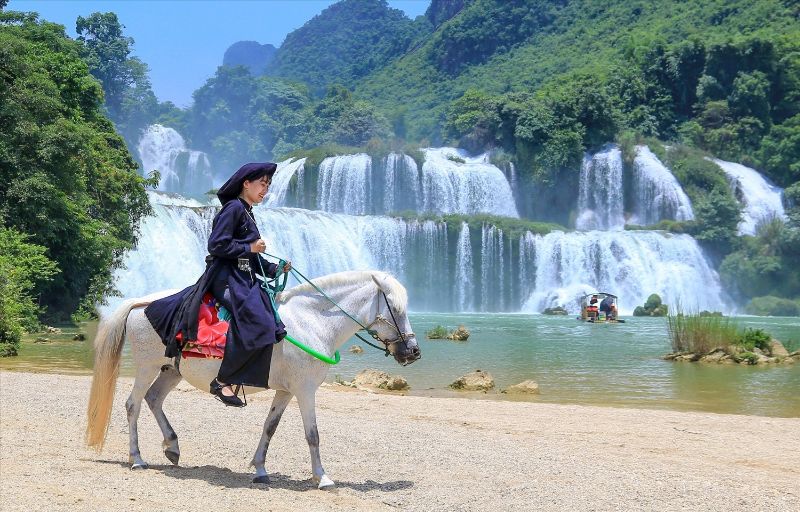
- Do not swim in the water. Swimming is prohibited due to safety and border rules. Boats require life vests for riders, which are color-coded by country.
- Negotiate raft prices calmly. Vendors offer river rides frequently. Rates may vary slightly, so you can ask before getting on.
- Follow local advice on transport. Public buses run from Cao Bang to the falls (~60–85 k VND, 2–3 hours). Many visitors also rent mopeds or hire drivers.
- In the rainy season, expect muddy water and slippery surfaces. Rain may affect visibility and travel conditions.
- Respect border rules. Do not attempt to cross into China on your own. Independent travelers may not enter the Chinese side.
Frequently asked questions about Ban Gioc Waterfall
Still curious? Here are answers to some common questions tourists ask about Vietnam Ban Gioc Waterfall.
Is Ban Gioc the largest waterfall in Vietnam?
Yes. Ban Gioc Waterfall is Vietnam’s largest waterfall in both width (about 300 m) and scale. It drops about 30 m and is the country’s largest natural cascade. It also ranks as the fourth-largest international-border waterfall in the world, after Iguazu, Victoria, and Niagara.
Can you visit both sides of the waterfall (Vietnam/China)?
No, not independently. Cross-border visits are only allowed via authorized group tours for Vietnamese and Chinese nationals. Third-country visitors typically cannot join. The general public cannot cross the border at the falls on their own.
Is a permit or guide required?
No permit is needed for visiting the Vietnamese side. An entry ticket suffices. A guide is optional but helpful for transport or language support. Organized cross‑border tours require permissions, but daily sightseeing on the Vietnam side is straightforward.
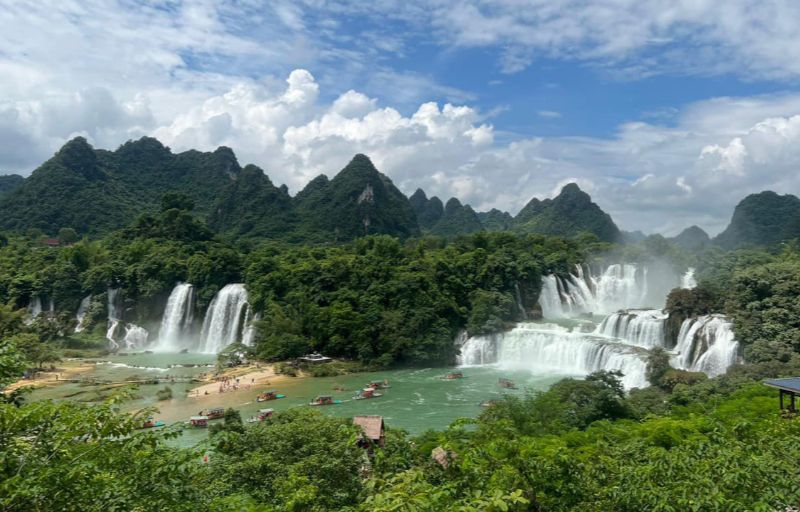
Can I swim in the waterfall?
No swimming is allowed. The Quay Son River flows across international waters, and swimming raises safety and border concerns. Boats give close views, but staying dry is expected.
What transport options are available to reach the falls?
You can take a public bus from Cao Bang town. The ride costs around 60-85,000 VND and takes roughly 2–3 hours. Alternatively, hire an xe om (motorbike taxi) or private driver. Many homestays can arrange transport.
Is the raft ride safe?
Yes, if you use a licensed boat. Rafts are small bamboo pontoons. Life vests are color-coded – the Vietnamese side takes blue, the Chinese side green. Riders should be ready to get wet. The ride lasts about 10–15 minutes.
Travel consciously-choose Lily’s Travel for your next trip! Recognized as a top-rated agency with thousands of 5-star reviews, Lily’s Travel offers more than just itineraries – we curate experiences that honor local culture, promote community values, and embrace sustainable tourism. From Vietnam’s hidden gems to cross-border cultural journeys, we guide you with heart, purpose, and innovation.
Ban Gioc Waterfall captures the spirit of Vietnam’s untamed beauty. A visit here connects you with nature in a rare and breathtaking way. Whether it’s your first trip or a return journey, Ban Gioc will always welcome you with timeless charm.
Read more: Hanoi to Ban Gioc Waterfall: Go off the beaten path

